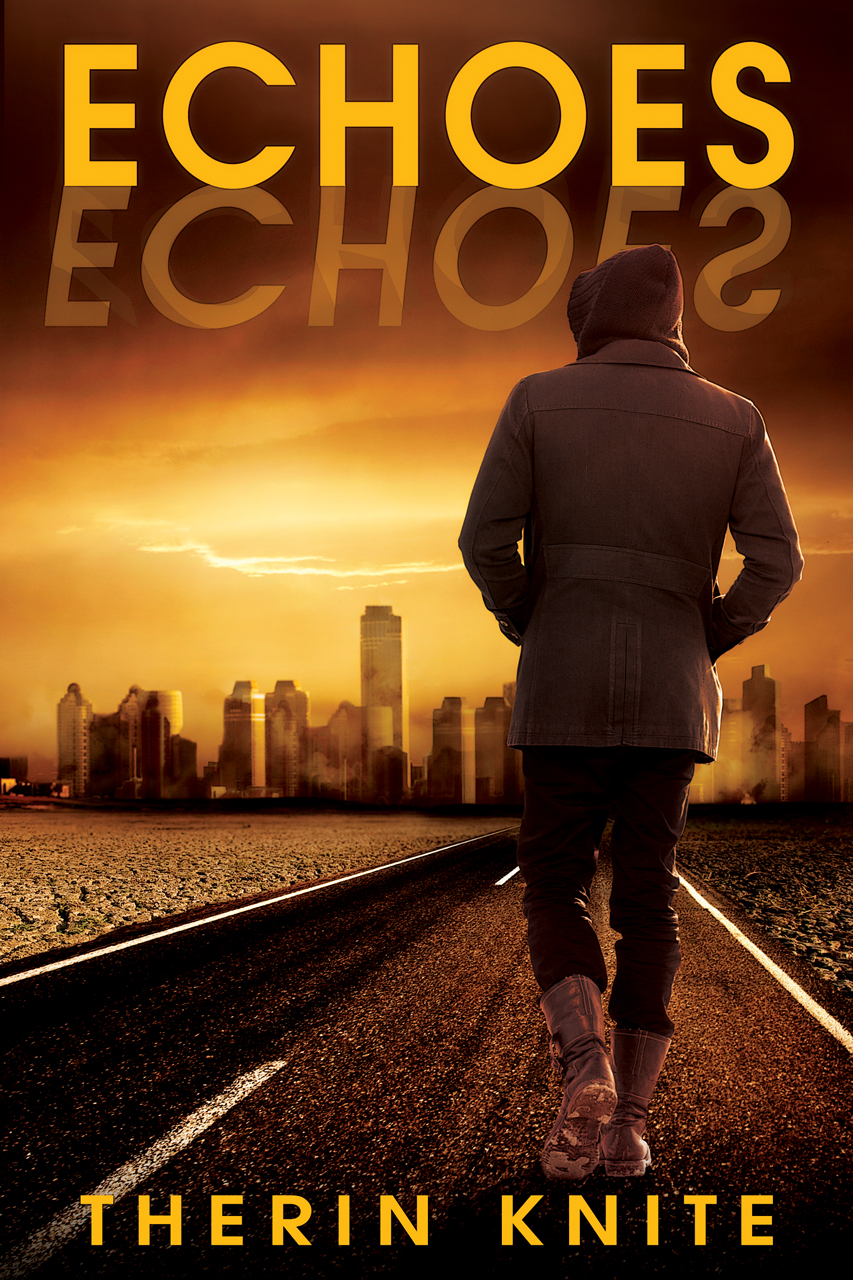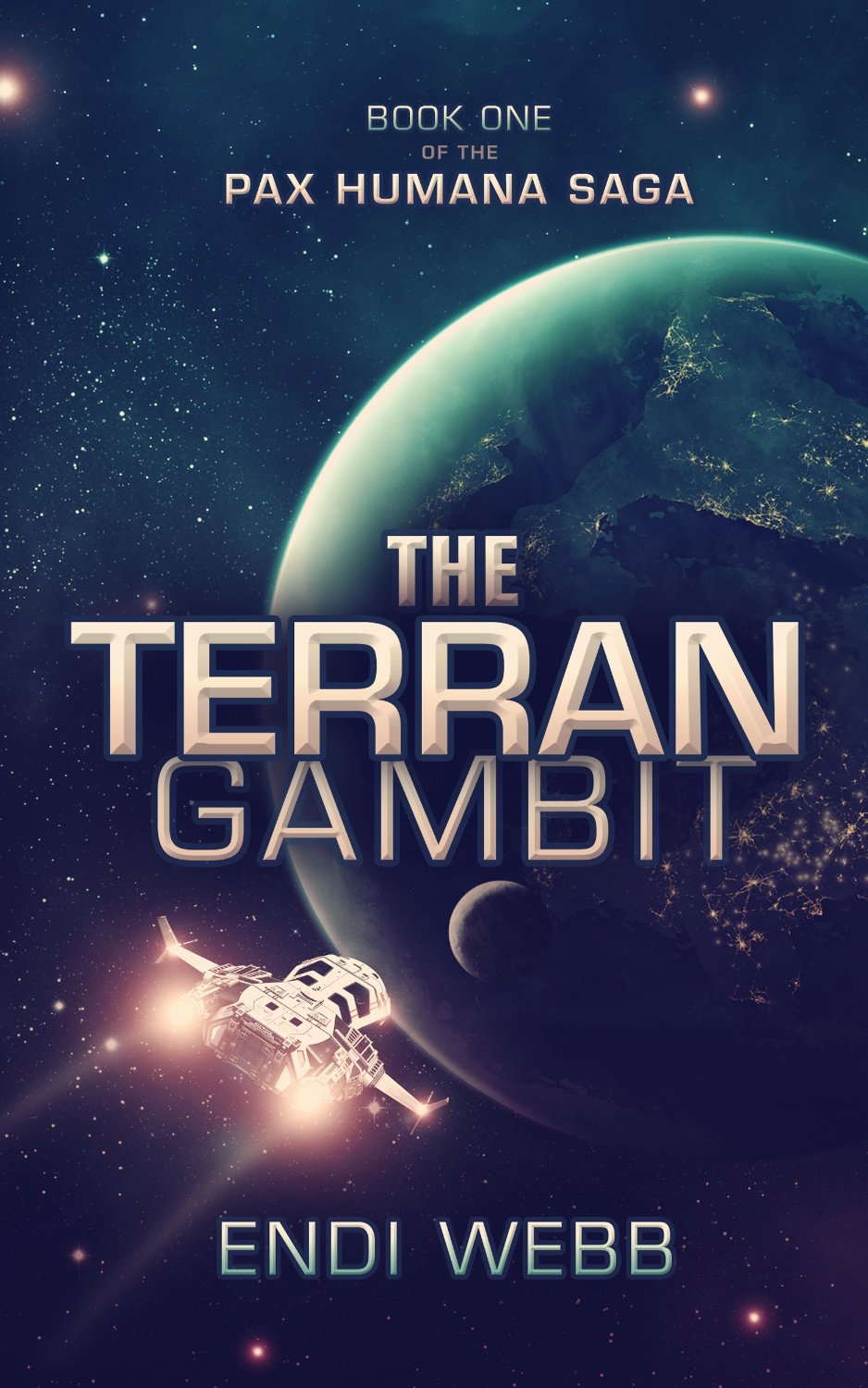

I have two guests today, as both these authors are launching a promotion starting today: Therin Knite launched her debut novel Echoes, a futuristic thriller, last January. The book is available on Amazon, B&N, GooglePlay, Kobo, and iBooks, and will be at the discounted price of $0.99 for a limited time only. So grab it while you can! Therin's next book, Othella, will be released next June, but you can already request an ARC copy on Therin's blog.
Vincent Trigili is the author of the fantasy series The Lost Tales of Power, and the fifth book of the saga, The Sac'a'rith, is available on Amazon, Smashwords, B&N, GooglePlay, and iTunes.
Therin Knight
EEG: You're a senior in college: what are you majoring in?
TK: I'm double majoring in Finance and English.
EEG: So young and already a book out: tell us about your recent release, Echoes.
TK: Echoes came about when I, well, miserably failed to write another sci-fi novel called Sync (the first in a trilogy). I didn't haven't the skill at the time to pull off the kind of story structure I wanted, so I came up with Echoes -- a more straightforward story written in a similar style. Echoes follows the embarrassingly named Adem Adamend as he navigates early 28th-century life in the United Republic of Earth. Adem works for the Republic's global crime-solving agency, the Interdistrict Bureau of Intelligence. Using his unique, "Sherlock-esque" skills, Adem is able to solve crimes at a much faster rate than most of his peers. Echoes begins with Adem stumbling upon a very strange murder case -- when he mentally recreates the victim's death, the only "murderer" that fits the evidence is a dragon.
EEG: What are your plans for the rest of the series?
TK: Echoes will continue next January with Epitaphs, which takes place about two months or so after the end of the first book. After the events of Echoes (the book), Adem is trying to get used to his new position and his new abilities. But, as you would expect, crime doesn't wait for Adem to catch up, and a terrorist organization arrives in Washington (the city) and starts causing chaos.
Overall, I haven't settled on the exact number of books in the Echoes series, but it's not going to be a short one. The series is designed to read somewhat like a TV show. It's episodic in nature, with small time jumps between each book. Every five books makes a "season," and there will longer time gaps between each season. I'm debating between whether I want to go for four, five, or six seasons right now. Of course, my choice will depend largely on audience reception as the series continues.
EEG: What will The Neuropath Quartet be about?
TK: The Neuropath Quartet is an upper YA (16+) futuristic sci-fi series about people with special mental abilities -- neuropaths. By "mental abilities," I mean the power to manipulate other people's minds. Neuropaths can hijack others' brains and basically tamper with them any way they please. From memory and emotional manipulation to destroying sensory perception to causing severe mental illness to simply..."turning them off."
The series follows a 17-year-old Class A neuropath (one of the strongest), Mal Halloran, who works for a CIA-like government organization that uses neuropaths to "keep the peace." The story is set in a time where there's already been a neuropath civil rights movements (coming off what was close to being a civil war) but discrimination against neuropaths still runs high because non-paths are deathly afraid of having their minds invaded.
Mal is part of a task force created to hunt down and kill the world's strongest neuropath, Langdon Moore, who assassinated the US President and several Prime Ministers during a global summit about 7 years before the series begins. Mal's father, who was on duty at the summit, was also killed in the attack, and Mal is on a vengeance quest for most of the series.
In order, the books are called Game Keeper, Game Changer, Game Master, and Game Ender. I'm also planning a prequel novelette, predictably called Game Starter, that I plan to write this summer for an anthology.
Vincent Trigili
EEG: Why did you decide to study math and computer science in college?
VT: When I was a tiny little Vincent, I had dreams. They mostly involved shooting things, but I digress. When I was little I wanted to grow up to be a computer programmer. Not just any programmer, but one that wrote video games. Unlike most kids, I did not change from that as I grew up. I even spent all of my Christmas money to buy a Commodore 64 when they were new and cool. I was writing programs for computers in the third grade in BASIC on that machine, and eventually transitioned to Turbo Pascal on a PC when my high school offered a class in it.
When I finally got to college, I still wanted to pursue computer programing but I was very unfocused about my degree. I took classes in every subject area possible, including, but not limited to: Music, Philosophy, Math, Science, English, and any thing else that sounded interesting in the moment. It was not until I transferred to my third college (I moved a lot in my early adulthood years) that I even looked at a plan to actually graduate. It was there that the advisors told me I had enough credits to earn not only a B.S. in Computer Science, but a second B.S. in Statistics also. In fact, even after filling those two degrees I still have a ton of unused credits left.
So how did I decide to study math and computer science? I did not really, both degrees just appeared one day out of the chaos of my random wanderings through college. Since then I have gone on to complete two graduate degrees, and obtained additional seemingly random educational achievements. These include security certifications, project management certifications and even a Black Belt in American Freestyle Karate. I have also had an extremely minor role in a movie, been an extra in commercials and even acted on stage to sold out audiences. All of these experiences help shape and form my story telling skills.
EEG: Have any of these concepts ever inspired your stories?
VT: Yes. One of the things I strive for when writing my stories is that even though they are fantastical and science fiction, they must be plausible. For example my faster then light spacecraft engines use a theory I came up with based on my study and understanding of how gravity works, and its impact on time and space. Is it beyond our current technology to test? Sure, but then it would not be science fiction if it was not.
I spend a lot of time researching concepts and ideas for all the fantastic events in the stories and I have had many times to trash ideas because I could not make them work with the laws of nature that we understand today. For example, in The Enemy of an Enemy there is a scene where one military force wants to wipe out their enemies. In my original cut I had them causing a star to go super nova and thereby destroy everything in the solar system. Sadly, after much research I could not find a realistic way to make that happen, so the scene was rewritten with a more realistic, but still devastating means of wiping out a large concentration of enemy forces.
It is all that time I spent in college learning a wide array of random unconnected facts and ideas that helps me keep my worlds somewhat realistic and believable while holding on to a strong flare of fantasy.
EEG: Tell us about the series you're working on. From your website: "The early books in the series take place in a futuristic universe that has recently been discovered by a medieval realm." So basically, you are mixing past and future -- that's quite an intriguing concept.
VT: The Lost Tales of Power series is set in a multi-realm universe with the primary story line currently taking place in a futuristic version of our universe. There have been side paths along the way that have dipped into other realms, and one significant sub plot surrounding a medieval style realm.
The long term vision for the books is that they will all be set in the same universe, with overlapping characters and timelines, but be unique stories. I am not creating a series in the traditional sense where you have to read all the books in order, but an open-ended universe where individual books and series live together.
The first four volumes lay the foundation for the entire universe, and set the stage for all future books. Volume five, The Sac’a’rith, could be read as a stand alone (and eventually will have at least one or two books follow it as one of the first miniseries in side of the universe.
The mixing of “past and present” is a result of the multi-realm nature of the universe I have created through the books. It is not reasonable to think that every realm would be at the same stage of technological development as every other realm, so you end up with knights on horse back interacting with space ship captains. There are wizards and computer hackers working side by side, and fights over protecting one culture from being destroyed by another’s technology.
EEG: Tell us about your latest book release.
VT: On Friday, December 13th, 2013, The Sac’a’rith, was released and for the first time since the series started it broke away from the core cast. It introduced a whole new cast of characters, races and adventures. The story actually takes place at the same time as the previous book does which made some of the time line tracking tricky, but it was good practice for future books that will do the same.
The Sac’a’rith follows the story of Zah’rak, a Zalionian (which is a reptilian race), as he gets freedom from his master and follows a stranger into battle against a rising tide of darkness. They pick up some other misfits along the way and through Zah’rak’s struggles more about the far remote past of the universe is revealed and the backdrop of other stories is pulled back to hint at just how big the universe really is.
Hopefully soon, Spectra’s Gambit will be released (it is in editing now) and that will return to some of the characters that readers loved from the earlier books. It follows Spectra and Dusty (a leading couple from the earlier books) as they grow and carve out what it means to be following a forbidden art in a world were the rules are still being worked out.
After Spectra’s Gambit will come the sequel to The Sac’a’rith (which I am currently writing). It is to early to tell much about what it will entail, but in general, it will follow Raquel and the other key characters from The Sac’a’rith as they try to resurrect a noble order of yesteryear.


















